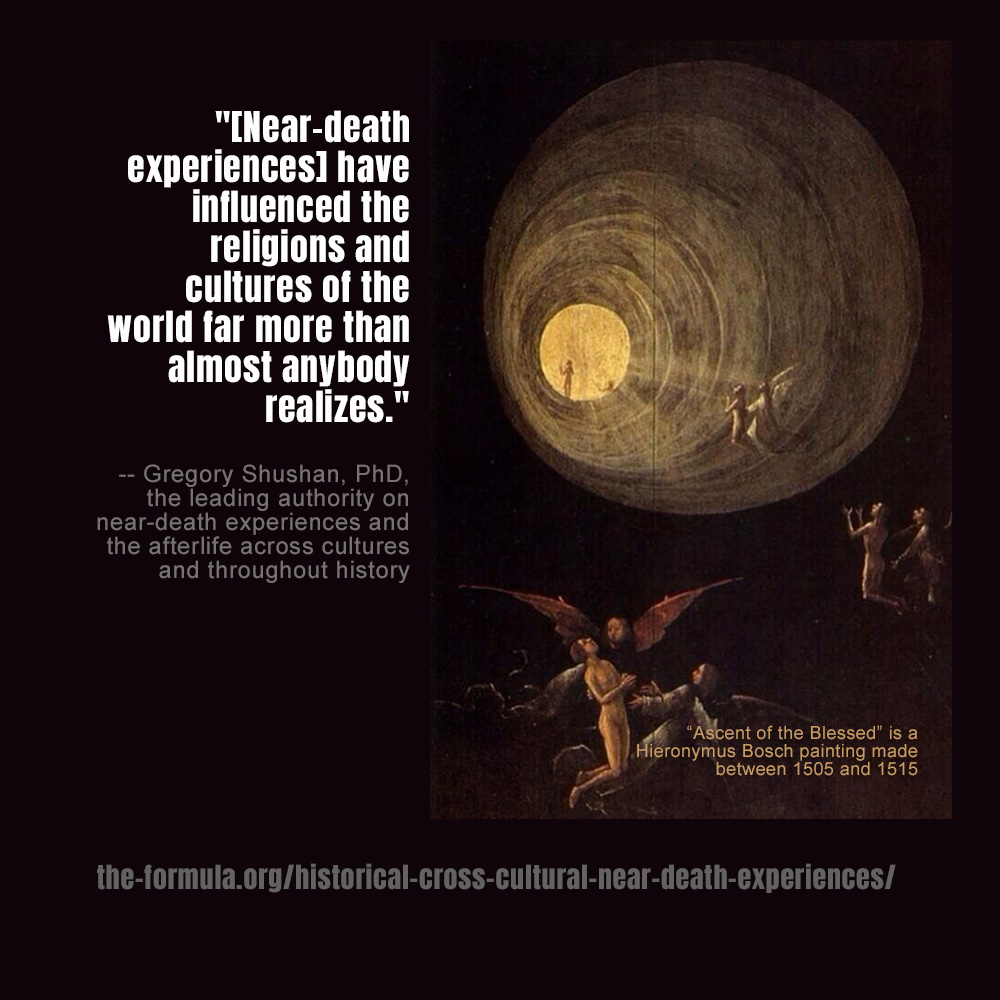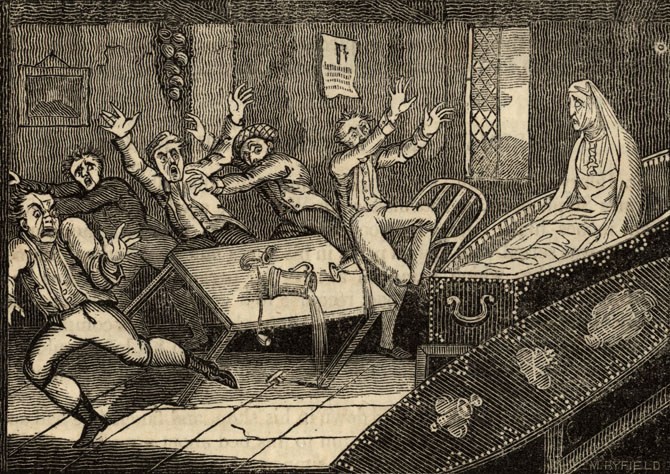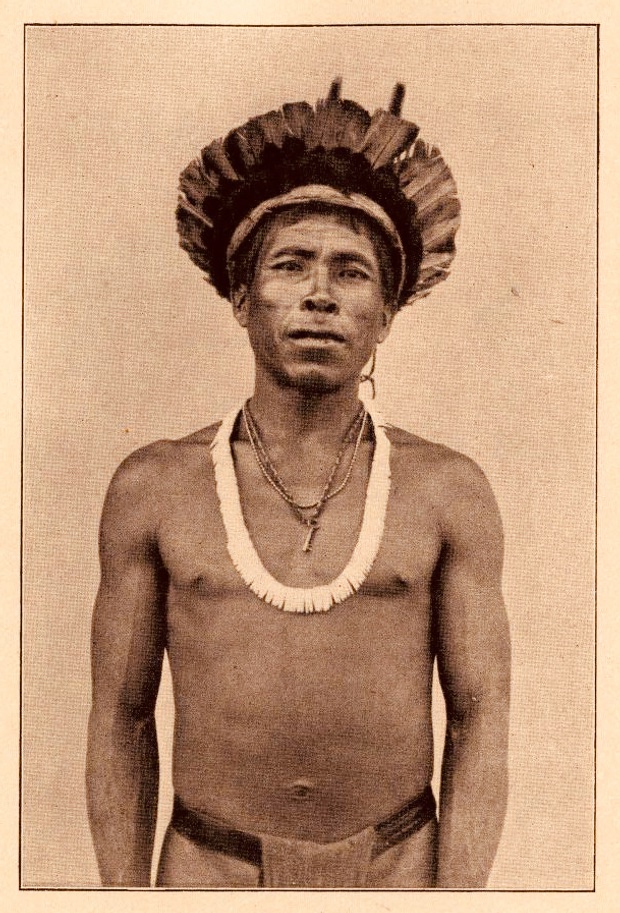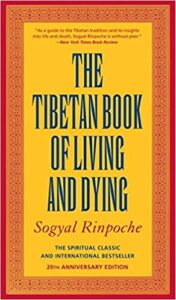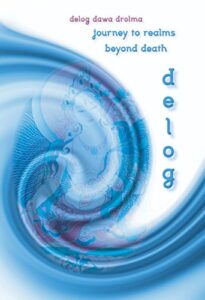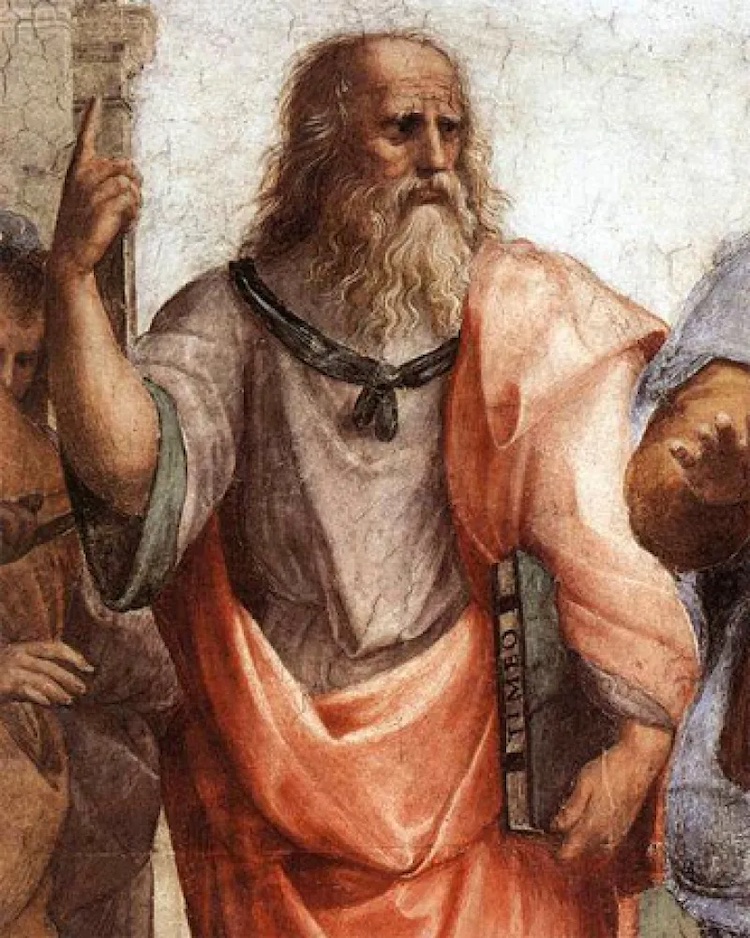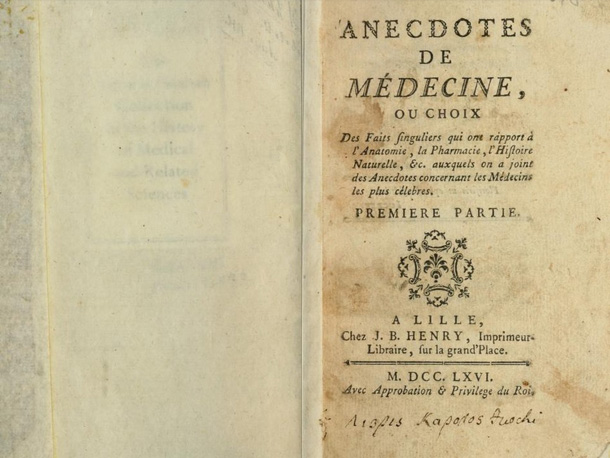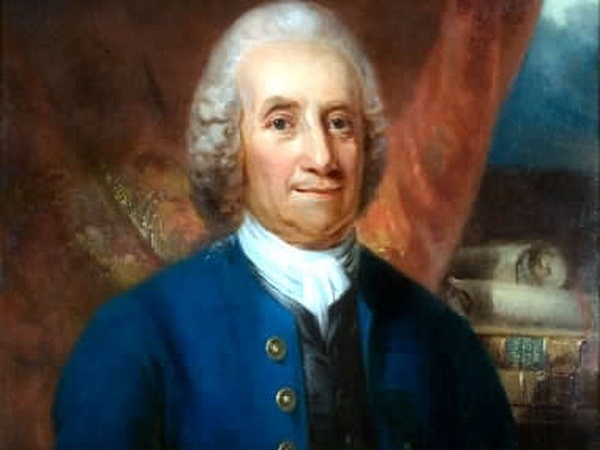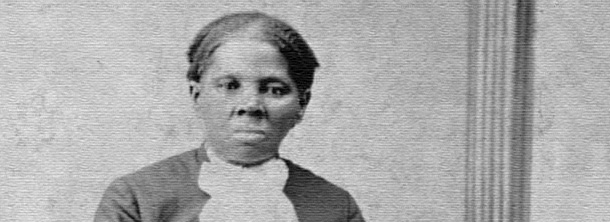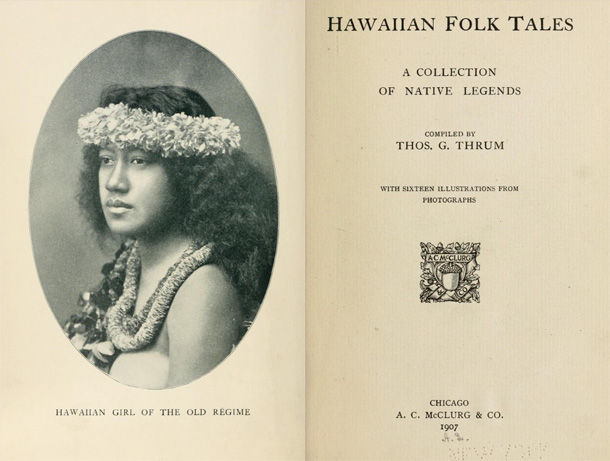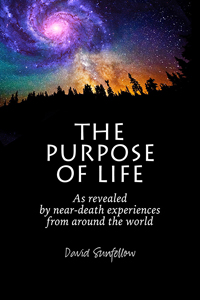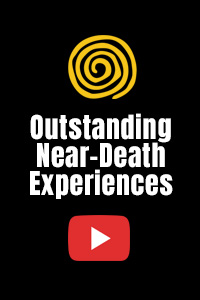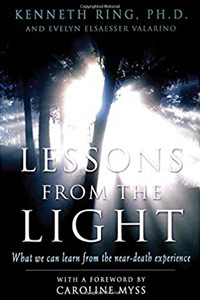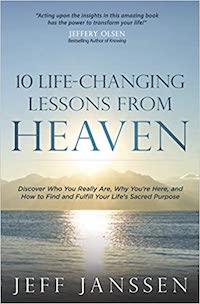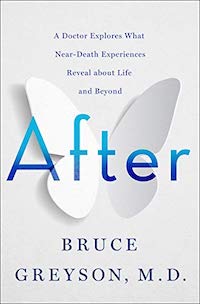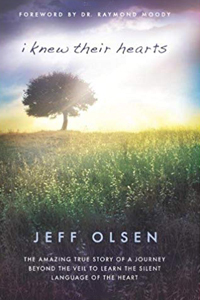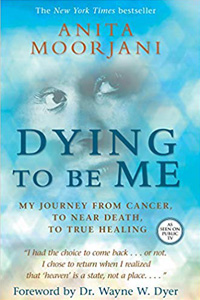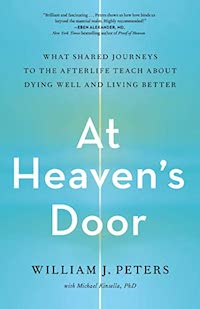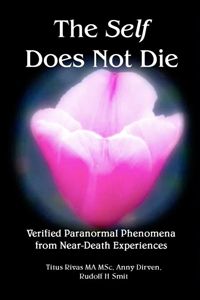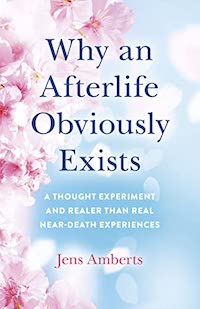Near-Death Experiences Have Been Teaching, Healing, Guiding, And Evolving Humankind From The Earliest Days
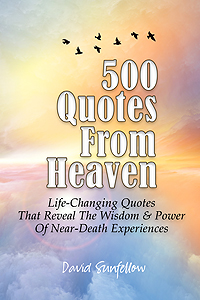 “Based on the groundbreaking work of scholars like Gregory Shushan, it is now clear that near-death experiences provided the source material that both civilized and indigenous cultures built their spiritual traditions on. What’s more, an evolutionary impulse has provided a constant stream of new NDEs, with increasingly refined information, that has caused cultures around the world to modify old beliefs and practices and adopt new ones. In other words, near-death experiences have been teaching, healing, guiding, and evolving humankind from the earliest days. What’s different today, is that we finally have the tools — and awareness — to recognize this remarkable fact.”
“Based on the groundbreaking work of scholars like Gregory Shushan, it is now clear that near-death experiences provided the source material that both civilized and indigenous cultures built their spiritual traditions on. What’s more, an evolutionary impulse has provided a constant stream of new NDEs, with increasingly refined information, that has caused cultures around the world to modify old beliefs and practices and adopt new ones. In other words, near-death experiences have been teaching, healing, guiding, and evolving humankind from the earliest days. What’s different today, is that we finally have the tools — and awareness — to recognize this remarkable fact.”
— Near-Death Experience Researcher David Sunfellow, 500 Quotes From Heaven
………………….
NDEs From Around The World Often Bear Striking Similarities To Myths Of Afterlife Journeys In Different Religions
“Near-death experiences have been popularly recognised in the West since the mid-1970s, but people from the largest empires to the smallest hunter-gatherer societies have been having them throughout history. Accounts are found in ancient sacred texts, historical documents, the journals of explorers and missionaries, and the ethnographic reports of anthropologists. Among the hundreds I’ve collected are those of a 7th-century BCE Chinese provincial ruler, a 4th-century BCE Greek soldier, a 12th-century Belgian saint, a 15th-century Mexica princess, an 18th-century British admiral, a 19th-century Ghanaian victim of human sacrifice, and a Soviet man who’d apparently killed himself but was revived during resuscitation experiments. NDEs can happen to followers of any religion, and to those of none.
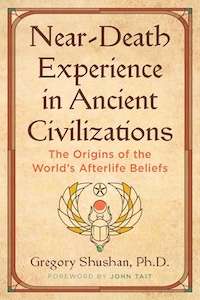 “Descriptions of NDEs from around the world often bear striking similarities to myths of afterlife journeys in different religions. In stories from ancient Sumer and Egypt to India and China and beyond, a soul leaves the body, travels through a dark place to a bright other realm, is greeted by deceased relatives, undergoes some kind of evaluation based on one’s life on Earth, meets a deity or other entity that’s often described as radiating light, and so on. It’s important to keep in mind that these common features are found despite the vast stretches of time and space that separate these cultures.
“Descriptions of NDEs from around the world often bear striking similarities to myths of afterlife journeys in different religions. In stories from ancient Sumer and Egypt to India and China and beyond, a soul leaves the body, travels through a dark place to a bright other realm, is greeted by deceased relatives, undergoes some kind of evaluation based on one’s life on Earth, meets a deity or other entity that’s often described as radiating light, and so on. It’s important to keep in mind that these common features are found despite the vast stretches of time and space that separate these cultures.
“Is it possible that this type of extraordinary experience that is universally associated with nearly dying is a fundamental source of beliefs about the afterlife? For many societies, there’s no need to speculate. In historical as well as modern accounts, NDEs are often said to lead directly to new beliefs, including the belief that consciousness can separate from the body and that it continues after death. I’ve unearthed more than 70 Native American NDE accounts dating from the 16th-19th centuries, and in more than 20 of them it was stated that the experience was a source of knowledge about the afterlife. Likewise, from the Pacific islands, 19 of the 36 NDE accounts I found had similar claims.”
— Gregory Shushan, PhD, Near-Death Experiences Have Long Inspired Afterlife Beliefs
………………….
“[Near-death experiences] have influenced the religions and cultures of the world far more than almost anybody realizes.”
— Gregory Shushan, PhD, the leading authority on near-death experiences and the afterlife across cultures and throughout history
………………….
The Next World: Extraordinary Experiences Of The Afterlife
By Gregory Shushan
Amazon Description:
In The Next World, historian of religions Gregory Shushan explores the relationships between extraordinary experiences and beliefs in life after death. He first shows how throughout history and around the world, near-death experiences have influenced ideas about the afterlife. Shushan also takes a deep dive into the problem of similarities and differences between NDE accounts. Not only do they vary widely, but so does a culture’s way of responding to them and integrating them into their belief systems.
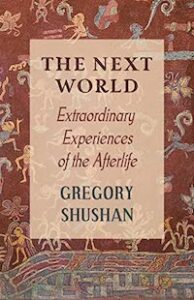
In this book Shushan also compares NDEs with accounts of shamanic spirit journeys to afterlife realms, intermission states between reincarnations from people who remember past lives, and descriptions of otherworlds by souls of the dead communicating through mediums. Accounts of all these phenomena bear striking similarities to NDEs, though also have important differences. Examining them each in relation to the other results in a kind of reciprocal illumination, in which each type of extraordinary experience sheds light on the other.
Drawing on over two decades of research into cross-cultural afterlife beliefs and extraordinary experiences, In The Next World presents not only an accessible overview of Shushan’s work, but also takes a bold new step in psychical research. By combining ideas and methods from a variety of disciplines — archaeology, anthropology, sociology, and the study of religions — Shushan’s unique take on the issues leads to new understandings of them. Unlike any of these disciplines, however, Shushan also crosses over into metaphysics, philosophy, and parapsychology, considering the implications of the cross-cultural data for the survival hypothesis: Are NDEs and other extraordinary experiences actually glimpses into another world and a taste of the true spiritual reality? If so, what could this afterlife actually be like in light of all the diversity of accounts?
………………….
Near-Death Experience in Indigenous Religions
By Gregory Shushan
Amazon Description:
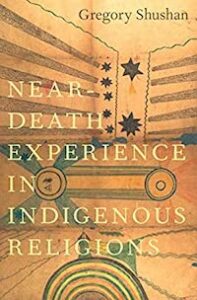 Near-death experiences are known around the world and throughout human history. They are sometimes reported by individuals who have revived from a period of clinical death or near-death and they typically feature sensations of leaving the body, entering and emerging from darkness, meeting deceased friends and relatives, encountering beings of light, judgment of one’s earthly life, feelings of oneness, and reaching barriers, only to return to the body. Those who have NDEs almost invariably understand them as having profound spiritual or religious significance.
Near-death experiences are known around the world and throughout human history. They are sometimes reported by individuals who have revived from a period of clinical death or near-death and they typically feature sensations of leaving the body, entering and emerging from darkness, meeting deceased friends and relatives, encountering beings of light, judgment of one’s earthly life, feelings of oneness, and reaching barriers, only to return to the body. Those who have NDEs almost invariably understand them as having profound spiritual or religious significance.
In this book, Gregory Shushan explores the relationship between NDEs, shamanism, and beliefs about the afterlife in traditional indigenous societies in Africa, North America, and Oceania. Drawing on historical accounts of the earliest encounters with explorers, missionaries, and ethnologists, this study addresses questions such as: Do ideas about the afterlife commonly originate in NDEs? What role does culture play in how people experience and interpret NDEs? How can we account for cross-cultural similarities and differences between afterlife beliefs? Though NDEs are universal, Shushan shows that how they are actually experienced and interpreted varies by region and culture. In North America, they were commonly valorized, and attempts were made to replicate them through shamanic rituals. In Africa, however, they were largely considered aberrational events with links to possession or sorcery. In Oceania, Micronesia corresponded more to the African model, while Australia had a greater focus on afterlife journey shamanism, and Polynesia and Melanesia showed an almost casual acceptance of the phenomenon as reflected in numerous myths, legends, and historical accounts.
This study examines the continuum of similarities and differences between NDEs, shamanism, and afterlife beliefs in dozens of cultures throughout these regions. In the process, it makes a valuable contribution to our knowledge about the origins of afterlife beliefs around the world and the significance of related experiences in human history.
Excerpts:
“In 1789, the American naturalist William Bartram wrote that all Native people he had encountered (primarily Cherokee and Muscogee) believed in the existence of an immortal soul that survives physical death in an afterlife of rewards and punishments as determined by earthly behavior. In addition, they related an abundance of stories of men that have been dead or thought dead for many hours and days… these people have always returned to life with doctrines and admonitions tending to encourage and enforce virtue and morality.”
…
“[In the early 1800’s, a Chippewa] hunter named Gitshee Gauzinee died after an illness… After four days he revived and related how he had traveled on ‘the path of the dead’ for three days… he met spirits on their way to the land of the dead, overburdened with supplies such as kettles, weapons, and food… His account led to a change in the funerary practices of his people, reducing the grave goods interred with the dead so that they would have an easier journey with less to carry.”
…
“[The spiritual traditions and practices of Native Americans provide] a virtual model of the experiential source hypothesis: that NDEs as filtered through cultural/individual layers are commonly the basis of afterlife beliefs. There are nearly seventy narratives describing… Native American NDEs across the continent, dating from the late sixteenth to early twentieth centuries. More than twenty overt indigenous statements testify that local Native American afterlife beliefs, and even whole religious movements, commonly originated in NDEs.”
…
“Given (1) the quality of experiential narratives that are thematically consistent with the cross-cultural model of NDEs, (2) the repeated examples of these experiences leading to innovations in religious beliefs and practices, and (3) the numerous indigenous statements that beliefs arose from such experiences, it is clear that Native American afterlife beliefs were typically grounded in such experiences, which were culturally and individually processed, interpreted, shared, and elaborated over time.”
…
“Until the late twentieth century, historically and historiographically, near-death experiences were neglected experiences. Considering the sheer volume of documentary narratives alongside related myths, practices, and beliefs as found in the anthropological record, this is surprising…
“What has prevented them from being identified as a discreet and important class of phenomenon by the vast majority of anthropologists and other interpreters of religions? Indeed, what has prevented such a relevant experience type from being seen as a factor contributing to religious beliefs, to the extent that serious arguments to this effect have been isolated, rare, or effectively marginalized?
“The answer would seem to lie in a refusal to take indigenous testimony seriously, from early missionary astonishment that afterlife beliefs could derive from NDEs, to philosophical and religious denigrations of the authority of experience, to Mircea Eliade’s determined obsession with universalizing shamanism, to medical and psychological pathologization, to postmodernist fixations on the particularities of culture and language to the exclusion of all else. All these perspectives deny a voice to the very people whose religions and experiences are being “explained” (or, rather, explained away).”
…
• The Next World: Extraordinary Experiences Of The Afterlife (Book)
• Near-Death Experience In Indigenous Religions (Book)
• Conceptions Of The Afterlife In Early Civilizations: Universalism, Constructivism And Near-Death Experience (Book)
• Gregory Shushan Website
• Gregory Shushan On Medium
• Gregory Shushan On Patreon
• Near-Death Experiences And The Origins Of The Afterlife
• Revelation In Near-Death Experience (pdf version)
………………….
The North American Indian Orpheus Tradition: Native Afterlife Myths And Their Origins
By Åke Hultkrantz
Amazon Description:
 In this scholarly but highly readable book, the famed anthropologist and historian of religions Åke Hultkrantz takes us on an in-depth exploration of Native American afterlife journey myths and shamanism. Anticipating the western “discovery” of near-death experiences by nearly 20 years, Hultkrantz recognized them as phenomena distinct from other extraordinary experiences such as dreams and vision quests. Equally remarkable, Hultkrantz found that Native American afterlife myths were actually influenced by NDEs and shamanic otherworld journeys. Weaving this discovery together with various cultural and psychological factors, Hultkrantz also delves into other supernatural beliefs and practices such as soul-retrieval, ghosts, funerary rituals, reincarnation, and the Ghost Dance religions in which initiates deliberately induced NDE-like experiences. Rounding off his study with comparisons to afterlife journey myths in ancient Greece, Mesopotamia, across Asia, and the Pacific islands, Hultkrantz crafted an unsurpassed masterpiece of comparative religion and paranthropology, many years ahead of its time. Originally published as a small edition in Europe, the book was never widely available to the general public and has been out-of-print for decades. Afterworlds Press is proud to now make this groundbreaking work accessible to a new generation of readers.
In this scholarly but highly readable book, the famed anthropologist and historian of religions Åke Hultkrantz takes us on an in-depth exploration of Native American afterlife journey myths and shamanism. Anticipating the western “discovery” of near-death experiences by nearly 20 years, Hultkrantz recognized them as phenomena distinct from other extraordinary experiences such as dreams and vision quests. Equally remarkable, Hultkrantz found that Native American afterlife myths were actually influenced by NDEs and shamanic otherworld journeys. Weaving this discovery together with various cultural and psychological factors, Hultkrantz also delves into other supernatural beliefs and practices such as soul-retrieval, ghosts, funerary rituals, reincarnation, and the Ghost Dance religions in which initiates deliberately induced NDE-like experiences. Rounding off his study with comparisons to afterlife journey myths in ancient Greece, Mesopotamia, across Asia, and the Pacific islands, Hultkrantz crafted an unsurpassed masterpiece of comparative religion and paranthropology, many years ahead of its time. Originally published as a small edition in Europe, the book was never widely available to the general public and has been out-of-print for decades. Afterworlds Press is proud to now make this groundbreaking work accessible to a new generation of readers.
Excerpt:
“It is rather rare for a person in normal sleep to have a dream experience of a journey to the other world. Dream-journeys are not uncommon, but their goal is for the most part within the frame of the natural world. Hallowell, for instance, testifies that among the Saulteaux he did not hear ‘any personal accounts of the journey of the soul of a perfectly healthy man to the land of the dead while he was asleep.’ Only under certain circumstances – often in connection with illness or painful states of a mental or physical kind – does the soul glide into the way to the land of the dead. Thus of the Thompson Indians it has been said that: ‘When a person dreams, his soul leaves the body, and walks around the earth. The soul of a person who has the nightmare is nearing the beginning of the trail leading to the world of the souls.’
“In unhappy circumstances the soul may go astray on its dream excursion and land up in the realm of the dead. The result is then seldom slow in manifesting itself. The Cocopa Indians who reach the abode of the dead in dreams are exhorted by the dead not to return, but to stay there to escape the hunger and difficulties of this world. But the consequence of such a dream is that the dreamer falls ill. Feverish Ojibway and Creek Indians may while in the state of delirium journey to the other world. In fortunate cases the dreamers are turned away in time by the dead who confront them or hasten towards them. Father Boscana tells of a feverish Juaneño woman who arrived in the land of the dead in dream. She was sent back to life, however, on orders from the ruler of the afterworld; ‘the woman could not live with them [the dead] yet.’
“When in a dream experience a sick Saulteaux Indian approached the village of the dead ‘he could hear the voices of people shouting and laughing. But someone met him on the road and ordered him back. ‘You’re not wanted yet,’ he was told.’ One who does not want to risk illness or even death can as a rule not venture on a visit to the realm of the dead – unless he is a medicine-man. The Wailaki shamans, for example, frequently visited the land of the dead in their dreams; they were careful not to eat anything there, and were then able to return safely.”
………………….
Near-Death Experience And The Origins Of The Alleluia Religion
By Gregory Shushan, PhD
The Alleluia (or “Hallelujah”) church is an indigenous-Christian syncretistic religion of Guyana, on the northern coast of South America. It had its origins in the NDE-like shamanic afterlife experience NDE of its founder, Bichiwung of the Makushi people, in the Kanuku Mountain region sometime after 1845. The religion proper, however, was founded by an Akawaio prophet named Abel, following his own spontaneous NDE.
According to indigenous testimony, Bichiwung worked for an English missionary who not only taught him English but also took him to England for a time. While there, Bichiwung claimed that he overheard the missionary telling his wife that despite what he was promising Bichiwung, he planned to withhold from him the secrets of God’s teachings. Bichiwung was baptized but was instructed to stay alone in a house to which he was brought, to work as a security guard. Far from his home and his people, feeling betrayed and maneuvered into a job he didn’t agree to, Bichiwung grew lonely and depressed.
Based on her fieldwork among the Akawaio in the 1950s, and synthesizing the accounts she was given, the anthropologist Audrey J. Butt summarized:
“He began to think about all he had been told and he wanted to see God for himself to find out for sure that the white man had told him the truth. The white people had shown him a trail to God and he went off that way on his own.”
According to one account, the trail led to the top of a hill where Bichiwung prayed. Then his soul followed those of three boys who had recently died. They were allowed to enter heaven, though Bichiwung could only get halfway through the door because God would not allow him in due to his sins. It is likely that Bichiwung had been taught by the missionaries to follow the “path” of Christianity – a figure of speech he took literally, which was then manifested in his shamanic-type experience. Another version states simply that “He slept and spirit went to heaven to find God.” In any case…
“When Bichiwung met God he wanted to get into heaven but God said that he could not go in and He asked Bichiwung why he had come. When Bichiwung said that he wanted to make sure that he was being told the truth by the white man God let him into heaven and showed him round the place. God spoke to him and said that the white people were deceiving him and that it was Alleluia which was good. So Bichiwung got Alleluia from God then, and God also gave him a bottle of white medicine and words and songs and also a piece of paper which was the Indian Bible. These things Bichiwung was told to lock in his canister and only to take out on his return to his homeland. Bichiwung liked heaven and wanted to stay there [particularly “a wonderful garden” he saw] but God said that he could not stay because he had not yet died. God told him to go back the way he had come, to continue guarding the white parson’s things and then to return home to help his family and to teach Alleluia.”
Bichiwung followed these instructions. He abandoned reading the Christian books and instead took back to his people the Alleluia teachings and the “Indian Bible,” “which he had got on his own, from God.” According to one version, he did not take a physical book from heaven, but merely wrote down what he had been told by God after reviving. Regarding his return, one source stated:
“When Bichiwung was speaking to God he saw his wife and children. After he saw his wife and children he wanted to go to them; God said he mustn’t go that way to his wife and children, otherwise he would fall down dead. He wanted to go back to them without passing over the sea but God said he must go back the same way that he had come.”
After his return, Bichiwung had further out-of-body afterlife experiences in which his spirit went to heaven and he again met God, and Alleluia “became apparent to him.” He converted first his family to the new religion, then the rest of his people. On one of his otherworld journeys, God gave him one seed for every kind of local fruit and vegetable, and when he planted them they became a miraculously abundant garden.
But his success and popularity led to jealousy among certain sorcerers, one of whom killed Bichiwung. His wife, however, was able to revive him with the “white medicine” he was given in heaven. He was then killed a second time, and though his body was “cut into two or three pieces,” his wife was again able to reassemble and revive him by use of the medicine. He was finally killed permanently when his body was chopped into small pieces and some of them could not be located.
Some of the secrets of Alleluia were unfortunately lost with his passing, though his people continued to practice what they could remember, combining it with other local traditions. Some years later, however, a shaman and sorcerer named Abel would restore Bichiwung’s teachings following his own NDE.
Abel, believed to have been born in 1836, was a wicked man who “had killed many people” and laughed at the Alleluia religion when he was first told about it. According to one elderly woman:
“When Abel died, or nearly so, for he slept for almost a week, his wife and children were crying. They blocked up the path to heaven, which is like a big sea, so that he couldn’t get past it. He said to them on waking up that kapong [the Akawaio people], mustn’t cry when people die, otherwise the deceased can’t get to heaven. The mourner must just pray; after the body is put in the grave people can cry, but not before…. Abel slept six days, then he got Alleluia from God…. God spoke many things to Abel…and when Abel woke up he said what God had told him.”
After his NDE, Abel reformed and became a better person, concerned for the well-being of his people. He also undertook deliberate journeys to heaven to understand Alleluia, during sleep and through prayer, when “his spirit was wandering apart from his body.” On one such journey he met a deceased brother-in-law, but at the “gates of heaven” he was told by God that he could not enter because of his sins, and “you have to wait until you have died.”
Like Bichiwung, Abel taught resistance to colonialist authority and Christian religious teachings. Abel prophesied that the Europeans would come and take their land. He was also told in a vision that if the people follow Alleluia, white people will become their servants; if not, they will become servants of the white people. This prophecy was seen as fulfilled after many natives converted to Seventh Day Adventism and became “servants of the white man.” These factors demonstrate how NDEs can be enlisted as tools of political and cultural resistance.
While there is obviously no way to confirm that any of these events actually occurred nearly 180 years ago, it seems likely that at the heart of the accounts lie actual NDEs. It should be remembered that NDEs were not a part of any orthodox Christian teachings the indigenous people would have been subjected to by the missionaries. This means that it’s highly unlikely that they simply learned about the phenomenon from missionaries – especially given their resistance to their other religious teachings. It is, in fact, not surprising that the occurrence of such extraordinary experiences would lead to new religious beliefs, and indeed that such “direct” indigenous evidence would supersede foreign teachings found in Christian books and explained by missionaries.
In contrast, such experiences are consistent with indigenous shamanic traditions. The Akawaio practiced soul-retrieval, in which shamans would send their souls to the spirit world to retrieve those in danger of dying and help restore them to their bodies.
Similar religions originated with the afterlife experiences of other South American prophets, including two Baniwa Brazilian prophets, Venancio Aniseto Kamiko in 1857 and Aniseto in 1875; the Tukano prophet Alexandre Christo in 1858; and an Arapaco named Vincente Christo in 1878. Similar dynamics are also found among northern Native Americans and in indigenous societies in the Pacific regions, in a phenomenon known as “revitalization movements” in which a society undergoes a concerted effort to maintain and reinvigorate their culture and religion in the face of external domination.
A claim by one Akawaio informant that God told Bichiwing that the missionary teachings did not come from Him, and that they were out of date, recalls highly similar arguments from the Salish people of the Pacific Northwest in the 19thcentury, the Innu of Canada’s northeast in the 18th century, and various others. Finally, as with Alleluia, these other religious movements were maintained by the shamanic replication of the original experiences. In other words, shamans continued to travel to the other world and NDEs continued to be valorized because of the information gained through them in the spirit world.
Like Bichiwung, Abel was also killed by sorcerers and brought back to life twice, before they finally killed him permanently in 1911. The Alleluia movement eventually spread to Brazil and Venezuela, and is still practiced today – including spirit-journeys to the otherworld.
• See: Butt, A. J. (1960) “The birth of a religion.” In J. Middleton (ed., 1967) Gods and Rituals, 377– 435. Garden City, NY: Natural History Press, 380-94, 396-97, 399-405.
• For NDEs and religious revitalization movements, see: Shushan, Gregory (2018) Near-Death Experience In Indigenous Religions. Oxford: Oxford University Press.
………………….
Similarities Between Near-Death Experiences & Ancient Egyptian Afterlife Beliefs
………………….
Near-Death Experience Scholar Gregory Shushan: Making The Case For Cross-Cultural NDEs
………………….
Near-Death Experience Scholar Gregory Shushan: NDEs & The Origin Of Afterlife Beliefs (2016)
YouTube Description:
Whatever their source (biological, psychological, and/or metaphysical), NDEs are unquestionably part of human experience. While they share similar themes wherever they occur, no two descriptions are exactly alike. As with any experience, NDEs are filtered through our layers of culture, language, and individuality. The interpretation of the phenomenon as indicative of survival after bodily death, however, appears to be universal. Accounts from around the world and throughout history show that NDEs regularly impact beliefs about the afterlife, despite cross-cultural differences. This presentation addresses their role in the formation of afterlife beliefs; the relationship between NDEs and cultural expectations; and the varying modes of interpretation and assimilation of these experiences in different societies. The argument that NDEs are a driving force behind religious beliefs aligns well with the conference’s focus on the transformative aspects of NDEs, and how they are integrated into people’s lives.
Transcript of Gregory Shushan’s 2016 IANDS Presentation (pdf)
• The Next World: Extraordinary Experiences Of The Afterlife (Book)
• Near-Death Experience In Indigenous Religions (Book)
• Conceptions Of The Afterlife In Early Civilizations: Universalism, Constructivism And Near-Death Experience (Book)
• Gregory Shushan Website
• Gregory Shushan On Medium
• Gregory Shushan On Patreon
• Near-Death Experiences And The Origins Of The Afterlife
• Revelation In Near-Death Experience (pdf version)
………………….
Near-Death Experience Scholar Gregory Shushan: NDEs & The Origin Of Afterlife Beliefs (2012)
From YouTube Description:
In this seminar, Dr. Gregory Shushan reviews his research into the relationship between afterlife beliefs and certain types of ‘religious’ or ‘mystical’ experiences worldwide as found in the texts of early civilizations, and in the earliest ethnographic reports on indigenous societies. The key issue is the extent to which afterlife conceptions are consistent cross-culturally, and with the spontaneous, evidently universal near-death experience. In opposition to contemporary postmodernist-influenced assumptions that religious beliefs and experiences are entirely culturally constructed, Shushan argues that afterlife conceptions in human societies are commonly formed not only by a combination of culture-specific socio-historical and environmental factors, but also universal cognitive factors and universal anomalous experiential factors. This is demonstrated by the existence of thematically consistent narratives of near-death experiences found in nearly all times and places, which in turn correspond to the widespread general similarities found in afterlife conceptions worldwide. This is despite differences in social organization and scale, and high degrees of cultural independence and geographical and chronological distance between the societies considered.
• The Next World: Extraordinary Experiences Of The Afterlife (Book)
• Near-Death Experience In Indigenous Religions (Book)
• Conceptions Of The Afterlife In Early Civilizations: Universalism, Constructivism And Near-Death Experience (Book)
• Gregory Shushan Website
• Gregory Shushan On Medium
• Gregory Shushan On Patreon
• Near-Death Experiences And The Origins Of The Afterlife
• Revelation In Near-Death Experience (pdf version)
………………….
NDE Scholar Gregory Shushan: What Makes Near-Death Experiences Similar Across Cultures? L-O-V-E
Alex Tsakiris Interviews Dr. Gregory Shushan on Skeptiko
January 27, 2015
Alex Tsakiris: I think it is an important issue because the one thing that does strike me a lot is when you look at the contemporary near-death experience accounts, overwhelmingly what these people say beyond all the scholarly chit-chat is hey man, it’s about love. It’s about this indescribable but universally relatable feeling of love. That’s what it’s about. Forget everything else…It was about love. That does seem to come through universally, and I think that has a strong moral kind-of message behind it. How does that relate to what you’re finding cross-culturally. Does it fit or does it not fit?
Dr. Gregory Shushan: I think it does in some ways. In a lot of Native American accounts, people were sent back in order to tell others about the glories of the afterlife. There are also many accounts where some kind of traditional ritual has changed, often for the better — against sacrifice for example, because during the experience the person was given a new belief or ritual and told that the old one has to change. There might not always be specifically “love” as an explicit concept expressed in these texts, but there is often change for the better. The afterlife is seen as a place of wisdom, and a place of renewal, where people undergo purification and ritual bathing. So I think it can be related, even if the word “love” or a comparable word isn’t always used.
Listen to Complete Interview (MP3)
• The Next World: Extraordinary Experiences Of The Afterlife (Book)
• Near-Death Experience In Indigenous Religions (Book)
• Conceptions Of The Afterlife In Early Civilizations: Universalism, Constructivism And Near-Death Experience (Book)
• Gregory Shushan Website
• Gregory Shushan On Medium
• Gregory Shushan On Patreon
• Near-Death Experiences And The Origins Of The Afterlife
• Revelation In Near-Death Experience (pdf version)
………………….
Conceptions of the Afterlife in Early Civilizations: Universalism, Constructivism and Near-Death Experience
By Gregory Shushan
Amazon Description:
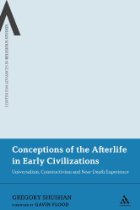 Gregory Shushan challenges post-modern scholarly attitudes concerning cross-cultural comparisons in the study of religions. In an original and innovative piece of comparative research, he analyses afterlife conceptions in five ancient civilisations (Old and Middle Kingdom Egypt, Sumerian and Old Babylonian Mesopotamia, Vedic India, pre-Buddhist China, and pre-Columbian Mesoamerica).
Gregory Shushan challenges post-modern scholarly attitudes concerning cross-cultural comparisons in the study of religions. In an original and innovative piece of comparative research, he analyses afterlife conceptions in five ancient civilisations (Old and Middle Kingdom Egypt, Sumerian and Old Babylonian Mesopotamia, Vedic India, pre-Buddhist China, and pre-Columbian Mesoamerica).
These are considered in light of historical and contemporary reports of near-death experiences, and shamanic afterlife ‘journeys’. Conceptions of the Afterlife in Early Civilizations is a significant study, for it presents a comprehensive new comparative framework for the cross-cultural study of myth and religion, while at the same time providing a fascinating exploration of the interface between belief and experience.
• The Next World: Extraordinary Experiences Of The Afterlife (Book)
• Near-Death Experience In Indigenous Religions (Book)
• Conceptions Of The Afterlife In Early Civilizations: Universalism, Constructivism And Near-Death Experience (Book)
• Gregory Shushan Website
• Gregory Shushan On Medium
• Gregory Shushan On Patreon
• Near-Death Experiences And The Origins Of The Afterlife
• Revelation In Near-Death Experience (pdf version)
………………….
The Handbook of Near-Death Experiences: Thirty Years of Investigation
Published in 2009
Hardcover Edition
Kindle Edition
Excerpt from Chapter 1: The Field of Near-Death Studies: Past, Present, and Future
 In 1975, Raymond Moody, then a medical student, published the book Life After Life. In it, he coined the term ‘near-death experience’ and the acronym ‘NDE,’ and he introduced the phenomenon of NDEs to the public and most professionals. His book marked the opening of the contemporary field of near-death studies. Even in that book, however, Moody noted that writers had recorded NDEs going back as far as ancient texts. It is now clear that accounts can be found in humankind’s earliest writings, including the Bible, Plato’s Dialogues, the Egyptian Book of the Dead, and the Tibetan Book of the Dead.
In 1975, Raymond Moody, then a medical student, published the book Life After Life. In it, he coined the term ‘near-death experience’ and the acronym ‘NDE,’ and he introduced the phenomenon of NDEs to the public and most professionals. His book marked the opening of the contemporary field of near-death studies. Even in that book, however, Moody noted that writers had recorded NDEs going back as far as ancient texts. It is now clear that accounts can be found in humankind’s earliest writings, including the Bible, Plato’s Dialogues, the Egyptian Book of the Dead, and the Tibetan Book of the Dead.
As that list of texts suggests, it is also now known that NDEs have been described across cultures, not only in the literature of Western culture but also in the folklore of Native American, South Pacific Islander, and East and Central Asian cultures and in the literature of non-Western cultures. Indeed, accounts of near-death and out-of-body experiences can be found in the oral traditions and written literature of about 95 percent of the world’s cultures (Sheils 1978).
More recently, over 150 years before Moody’s book, several authors explored the phenomenon that would later be named NDE-some of these people being, literally, explorers. In 1825, Henry Schoolcraft described an account in his book Travels in the Central Portion of the Mississippi Valley. In 1872, David Livingstone, of ‘Dr. Livingstone, I presume’ fame, described what we now call an NDE in his book Adventures and Discoveries in the Interior of Africa. Just one year later, Samuel Woodworth Cozzens related an account in his book The Marvelous Country: Three Years in Arizona and New Mexico. Before 1900, at least six other authors (Barrow 1848; Clarke 1878; Little 1881; Munck 1887; Winslow 1868) published books containing NDE accounts. Among these was Frances Power Cobbe’s 1882 book The Peak in Darien; in it, she recounted NDEs in which the experiencers encountered deceased people who were not at the time known to be deceased.
In the 19th century, accounts of NDEs also appeared in the Western professional literature of both medicine and psychical research. In the periodical literature, physician A. S. Wiltse published a description of an NDE in his 1889 article in the Saint Louis Medical and Surgical Journal. Accounts in the medical literature tended to focus on the effects of these phenomena, with the apparent goals of warning physicians not to declare patients dead prematurely and of helping survivors readjust to life after reviving. Accounts in the psychical research literature tended to focus on accurate perceptions of experiencers while ‘they’ were ostensibly out of their bodies, with the apparent goals of elucidating the relationship between mind and body and providing supportive evidence for the possibility that some part of humans may survive bodily death.
Beginning in the 19th century, Western investigators moved beyond individual case reports into collections of cases, which allowed analysis of features that appeared to comprise consistent patterns across individuals. Among these were Mormon collections of NDEs that were not published for the general public until the 20th century (Lundahl 1979, 1993-94). In Albert von St. Gallen Heim’s 1892 article in the Yearbook of the Swiss Alpine Club, he described 30 NDEs, primarily from climbers who had fallen while climbing, as he had done. In the first two decades of the 20th century, psychical researcher James Hyslop published a series of articles describing the phenomenology of ‘visions of the dying.’ For two decades beginning in 1971, Russell Noyes and his colleagues published a series of articles in the psychiatric literature describing ‘depersonalization in the face of life-threatening danger,’ including paradoxical hyperalertness and mystical consciousness. In 1975, German theologian Johann Christoph Hampe published a book describing the primary phenomenological features of NDEs; it was published in English in 1979. Indeed, before Moody’s book in 1975, in the scholarly Western periodical literature alone, over 25 authors had published over 30articles addressing NDEs (Holden and Christian 2005b). When Life after Life first appeared, it quickly became a bestseller. As of 2001, over 13 million copies had been sold, and the book had been translated into 26 languages (E. Russo, personal communication, August 10, 2006). This book ushered in the modern era of near-death research in which NDEs were identified as a discrete phenomenon rather than as a type of depersonalization, a special case of out-of-body experience, or a variety of religious epiphany. In the intervening 30 years, the topic of NDEs has continued to generate curiosity and has sustained interest such that researchers and theoreticians around the world have investigated and written on the topic. Thus, not only have NDEs occurred throughout history and across cultures but also the study of them has become increasingly international…
Contents Include:
1. The Field of Near-Death Studies: Past, Present, and Future
2. Pleasurable Western Adult Near-Death Experiences: Features, Circumstances, and Incidence
3. Aftereffects of Pleasurable Western Adult Near-Death Experiences
4. Distressing Western Near-Death Experiences: Finding a Way through the Abyss
5. “Trailing Clouds of Glory”: The Near-Death Experiences of Western Children and Teens
6. Characteristics of Western Near-Death Experiencers
7. Census of Non-Western Near-Death Experiences to 2005: Observations and Critical Reflections
8. World Religions and Near-Death Experiences
………………….
“It is very common for people to say that what they experienced was totally different from what they were taught to believe in. I’ve talked to people who were die-hard Christians, fundamentalist Christians who came back with non-denominational spirituality saying that it was not what I was led to believe. We also did a study looking at people who reported near-death experiences before Raymond Moody wrote his book in 1975 which gave us that name and told us what to expect in NDEs . . . We collected the best two dozen cases of those we had before the 1970s and compared them with a matched group we collected in recent years — matched in terms of age, gender, religion, religiosity, how close they came to death, how they came to be close to death — and we found that there was absolutely no difference. What people reported before Moody told us what to expect is the same as what they report now.”
………………….
Foundations of Near-Death Research: A Conceptual and Phenomenological Map
By Alexander Batthyany
Excerpt from Chapter 2.2
Comparative Phenomenology – Culture and Context
By Alexander Batthyany
Excerpt:
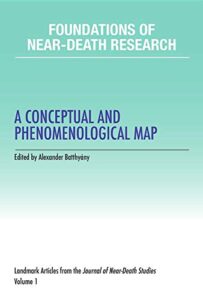 There already exists vast material on cultural differences and NDEs. This chapter introduces several central and representative phenomenological studies of NDEs in different cultural areas. The range covered by these works is considerable and includes evaluations of NDE reports across 12 cultural groups on five continents: Africa, Asia, Europe, North America, and Oceania. (No studies of NDEs in South America have been published in the Journal of Near-Death Studies, although many South American NDEs have been reported on the International Association for Near-Death Studies website and elsewhere [Long, 2010; NDERF Website].) The works included in this chapter were authored by researchers both indigenous and nonindigenous to the cultures they were studying, and some authors reported findings of interviews with near-death experiencers (NDErs), whereas others examined historical written accounts.
There already exists vast material on cultural differences and NDEs. This chapter introduces several central and representative phenomenological studies of NDEs in different cultural areas. The range covered by these works is considerable and includes evaluations of NDE reports across 12 cultural groups on five continents: Africa, Asia, Europe, North America, and Oceania. (No studies of NDEs in South America have been published in the Journal of Near-Death Studies, although many South American NDEs have been reported on the International Association for Near-Death Studies website and elsewhere [Long, 2010; NDERF Website].) The works included in this chapter were authored by researchers both indigenous and nonindigenous to the cultures they were studying, and some authors reported findings of interviews with near-death experiencers (NDErs), whereas others examined historical written accounts.
Beyond the individual findings of these articles, of even greater interest would be a systematic review of the data they contain. Already apparent from a mere reading of the articles, however, is that despite the diverse worldviews of the cultures represented, these works speak of the same type of experience. This result is not simply because the researchers contextualized the experiences as NDEs but, rather, because the individual experiences clearly show the typical core characteristics of NDEs — albeit not necessarily of prototypical NDEs — as currently conceptualized in the largely Western NDE literature. What remains unclear, and thus worthy of separate research, is to what extent cultural differences pertain to the actual experience of NDEs and not at least in part to what experiencers have retained in their memories and included in their reports as noteworthy…
NDEs appear to occur everywhere; they seem to be universal. As yet there is no cultural area where no NDE has been found.
………………….
Foundations of Near-Death Research: A Conceptual and Phenomenological Map
By Alexander Batthyany
Excerpt from Chapter 2.2
A “Little Death”: The Near-Death Experience and Tibetan Delogs
By Lee W. Bailey, Ph.D.
Excerpt:
 Accounts of people called delogs, dying and coming back to life, are well-known in Tibetan culture, and have been sporadically mentioned in Western studies. Now Euro-American researchers are translating texts and interviewing living delogs. Reviving after appearing to be dead for hours or days, these remarkable people report fantastic journeys into an otherworld filled with dramatic Buddhist figures judging and punishing or rewarding the dead.
Accounts of people called delogs, dying and coming back to life, are well-known in Tibetan culture, and have been sporadically mentioned in Western studies. Now Euro-American researchers are translating texts and interviewing living delogs. Reviving after appearing to be dead for hours or days, these remarkable people report fantastic journeys into an otherworld filled with dramatic Buddhist figures judging and punishing or rewarding the dead.
The Tibetan word is transliterated ’Das log, and variously spelled in different languages, but pronounced “DAY-log.” I have adopted the spelling of the latest English book entitled Delog, About Dawa Drolma, translated by her son (Drolma, 1995). Some regional dialects use other colloquial names.
In typical accounts of delogs, as young persons they have been gravely ill. High in the Himalayan mountains, lying in a small hut, they seem to be dead to those grieving around them. But instead, they later report, they had risen up above their bodies, which then they did not recognize as their own. Theirs is an archaic example of a mystical experience of the after-death state. Delog deaths are an extraordinary tradition in Tibetan culture, strikingly akin to the near-death experience (NDE).
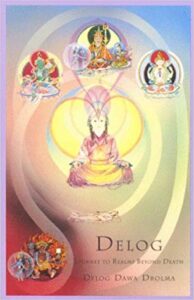 Next these persons’ dazed souls enter into a raucous hereafter, guided by their personal deity. They are taken to meet the horrifying Lord of Death himself. They are led on a shocking tour of Hell, where they see numerous condemned souls miserably suffering punishments befitting their sins, such as the nun who hears the unending cries of her own baby whom she murdered. The anguished sinners send urgent messages back to the living, begging family to do rituals to aid in their salvation and exhorting others to live an ethical life. The astonished travelers meet deceased parents and travel to paradise. Returning to the throne of the Lord of Death, they observe the dreadful judgment of souls with a bridge, a scale, or a mirror. They themselves are judged and given a message to send back. Their consciousnesses return to their bodies on earth. They deliver the various messages and exhort all to practice their Tibetan Buddhist religion faithfully.
Next these persons’ dazed souls enter into a raucous hereafter, guided by their personal deity. They are taken to meet the horrifying Lord of Death himself. They are led on a shocking tour of Hell, where they see numerous condemned souls miserably suffering punishments befitting their sins, such as the nun who hears the unending cries of her own baby whom she murdered. The anguished sinners send urgent messages back to the living, begging family to do rituals to aid in their salvation and exhorting others to live an ethical life. The astonished travelers meet deceased parents and travel to paradise. Returning to the throne of the Lord of Death, they observe the dreadful judgment of souls with a bridge, a scale, or a mirror. They themselves are judged and given a message to send back. Their consciousnesses return to their bodies on earth. They deliver the various messages and exhort all to practice their Tibetan Buddhist religion faithfully.
Such accounts of the Tibetan delogs are astoundingly akin to what we in the West call near-death experiences. But there are revealing differences with important implications. Sogyal Rinpoche discussed the delog phenomenon in The Tibetan Book of Living and Dying (Sogyal, 1993). He reported that “In Tibet this was an accepted occurrence, and elaborate methods were devised for detecting whether déloks were fraudulent or not” (Sogyal, 1993, p. 331). Earlier studies include articles by Lawrence Epstein (1982), Kenneth Ring (1993), and Christopher Carr (1993). I will discuss their views below.
There are historical records of delogs and contemporary studies of living delogs. Usually women, delogs have a revered place in Tibetan popular religion, although they may be neglected by some Buddhists. Historically, Buddhism was introduced to Tibetan culture from India in the 7th century C.E. The Indian master Padmasambhava was then invited by the King of Tibet in the 8th century. In order to bring Buddhism to Tibet, Padmasambhava had to contend with the native Bön religion, and some of the resulting traditions spiritualized these earlier tribal shamanic practices. The first Buddhist monastery was founded in 775 C.E. Later the leadership focused on the Dalai Lama, who was seen as the bodhisattva Avalokiteshvara in human form, living in the Potala palace in Lhasa. Although the delogs remained on the fringe of rural, archaic, Himalayan tradition, they absorbed much of the new Buddhism.
Following Epstein, the most notable anthropologist to study delogs was the French anthropologist Françoise Pommaret (1989), the first Westerner to do a book-length study, Les revenants de l’au-dela dans le monde Tibetain: Sources littéraires et tradition vivante [Those who return from the hereafter in the Tibetan world: Literary sources and living tradition]. She traveled often to the Himalayan highlands just south of Tibet, still accessible despite the 1959 Chinese invasion of Tibet, and part of Tibetan culture. In Nepal and Bhutan she discovered historical records of ten delogs from the 11th to the 20th century. She then interviewed a delog in a village in Nepal and three in Bhutan.
The other new book about a delog is the English account of Delog Dawa Drolma, who lived in Tibet around 1900 to 1941 and recorded her dramatic journeys to the hereafter with the aid of a scribe. Her book Delog: Journey to Realms Beyond Death was translated into English in 1995. Wandering Himalayan storytellers (mani pa) are also known for retelling these incidents (Pommaret, 1989). Delog accounts became a Tibetan literary genre by the 16th century, but they are just now reaching a global audience.
………………….
Historical NDE Cases
The Psi Encyclopedia
An experience clearly recognizable as the modern NDE is frequently referred to in historical literature.
The earliest known written account is found in the Tenth Book of Plato’s Republic and describes the experience of a soldier named Er, who revived while lying on his funeral pyre twelve days after he had been killed in battle. Er describes being escorted to a mysterious region and being confronted with two openings one next to the other. Judges sat between the entrances: those judged as righteous were sent to the right and upwards through the heaven, with tokens of their deeds attached to them. Those considered unjust were sent on the downward road to the left. At the mouths of other tunnels people were preparing for reincarnation on Earth. From above, happy souls reported visions of beauty; from below came the sounds of wailing, as souls bemoaned thousands of years of dreadful sufferings. A pillar of light resembling a rainbow extended from heaven to Earth, from which evolved a series of fates before those awaiting reincarnation. Prior to returning to life, each soul drank from the River of Forgetfulness, causing events to fade from memory. However, Er was not permitted to drink or forget, and so returned to life to tell the tale. (See below for more details.)
Accounts of near-death experiences in medieval times were presented by Carol Zaleski, an expert on world religions, in her scholarly study Otherworld Journeys (1987), where they are compared with modern reports. Zaleski describes narratives that reflect the four phases in the development of the Christian otherworld journey: the vision of St Paul, which conveys an apocalyptic theme within the deathbed vision; miracles of ordinary people being sent back to life, as in the tales of Gregory the Great; the full visionary journey, including apocalyptic themes, as in the Vision of Drythelm; and finally, the otherworld journey as pilgrimage, as in that of St Patrick’s Purgatory.
The typical medieval narrative appears to describe the same experience as the modern NDE, while using different symbolic imagery to describe it. Here, the journeys include a guide able to interpret unfamiliar signs, of archetypal, universal nature, usually that of an angel. Guides serve as a combination of instructor, protector and soul-taker in medieval accounts.
During the transition from this life to the next, Zaleski distinguishes a symbolic mode of passage, such as the wings of doves, Alexander’s griffon and Elijah’s chariot; or else the individual may follow the guide up a ladder or a waiting ship. Pathways encountered along the journey include pleasant imagery (rainbows, flowery meadows) or foreboding imagery (a dark forest, a thorny path laden obstructed by walls, rivers of fire or slippery bridges). Fire is a prevalent feature, its purpose seemingly to test, punish or purge. Sinners are burned according to the seriousness of their deeds; saints escape unharmed.
The bridge is a common feature in medieval accounts (being more of a hazard than now), symbolizing the danger of crossing the boundary into the other world. The bridges are perilous, obstructed by spikes, or too slippery to cross; they traverse rivers of knives, fire or foul smelling water, and narrow to a razor’s edge for those guilty of wicked deeds.
Overall, the journeys can be seen as an initial encounter with hell followed by a taste of heaven, with a didactic purpose. Experiencers are warned by their guide to change their previous lifestyle and to warn others likewise, in order to secure their place in heaven. The narratives depict those who return as being profoundly changed, sometimes to the extent of giving up their possessions and living austere lives. Changes are physical as well as emotional: reviving from an NDE, Edmund of Eynsham found that an open leg wound had healed.
Experiences of the NDE type have also been reported by explorers such as Henry Schoolcraft (1825) and David Livingstone (1872). A historical case from a non-Western culture is that of Black Elk, a Native American medicine man (see below for more details).
Early Medical Literature An article by the mountain climber Albert Heim, published in the Yearbook of the Swiss Alpine Club in 1892, describes how climbers who survived serious falls subsequently recalled feeling no anxiety or pain during the experience, but rather a calmness and a sense of rapid mental acuity. Some also reported seeing ‘a review of their entire past’.
Probably the earliest description of an NDE to be published in a medical journal is an account by physician AS Wiltse in the Saint Louis Medical and Surgical Journal in 1889…
………………….
The Myth of Er (423 – 347 BC)
According to Socrates from Plato’s Republic
The Myth of Er is a legend that concludes Plato’s Republic. The story includes an account of the cosmos and the afterlife that greatly influenced religious, philosophical, and scientific thought for many centuries.
The story begins as a man named Er dies in a battle. When the bodies of those who died in the battle are collected, ten days after his death, Er’s body remains undecomposed. Two days later, he revives on his funeral-pyre and tells others of his journey in the afterlife, including an account of reincarnation and the celestial spheres of the astral plane. The tale includes the idea that moral people are rewarded and immoral people punished after death.
Although called the Myth of Er, the word “myth” means “word, speech, account”, rather than the modern meaning. The word is used at the end when Socrates explains that because Er did not drink the waters of Lethe, the account (mythos in Greek) was preserved for us.
…
With many other souls as his companions, Er had come across an awe-inspiring place with four openings — two into and out of the sky and two into and out of the ground. Judges sat between these openings and ordered the souls which path to follow: the good were guided into the path into the sky, the immoral were directed below. But when Er approached the judges, he was told to remain, listening and observing in order to report his experience to humankind.
Meanwhile from the other opening in the sky, clean souls floated down, recounting beautiful sights and wondrous feelings. Those returning from underground appeared dirty, haggard, and tired, crying in despair when recounting their awful experiences, as each was required to pay a tenfold penalty for all the wicked deeds committed when alive. There were some, however, who could not be released from underground. Murderers, tyrants and other non-political criminals were doomed to remain by the exit of the underground, unable to escape.
After seven days in the meadow, the souls and Er were required to travel farther. After four days they reached a place where they could see a shaft of rainbow light brighter than any they had seen before. After another day’s travel they reached it. This was the Spindle of Necessity. Several women, including Lady Necessity, her daughters, and the Sirens were present. The souls — except for Er — were then organized into rows and were each given a lottery token.
Then, in the order in which their lottery tokens were chosen, each soul was required to come forward to choose his or her next life. Er recalled the first one to choose a new life: a man who had not known the terrors of the underground but had been rewarded in the sky, hastily chose a powerful dictatorship. Upon further inspection he realized that, among other atrocities, he was destined to eat his own children. Er observed that this was often the case of those who had been through the path in the sky, whereas those who had been punished often chose a better life. Many preferred a life different from their previous experience. Animals chose human lives while humans often chose the apparently easier lives of animals.
After this, each soul was assigned a guardian spirit to help him or her through their life. They passed under the throne of Lady Necessity, then traveled to the Plane of Oblivion, where the River of Forgetfulness (River Lethe) flowed. Each soul was required to drink some of the water, in varying quantities; again, Er only watched. As they drank, each soul forgot everything. As they lay down at night to sleep each soul was lifted up into the night in various directions for rebirth, completing their journey. Er remembered nothing of the journey back to his body. He opened his eyes to find himself lying on the funeral pyre early in the morning, able to recall his journey through the afterlife.
To learn about the fantastic culture of the ancient Greeks, go go here.
• Plato’s Near-Death Experience Testimony About The Soldier Named Er
• Wikipedia On The Myth Of Er
………………….
Historical NDE Cases
Horizon Research Foundation
Looking back in the literature, there have… been many historical accounts of near death experiences in different cultures and throughout historical time. For example they are described in Plato’s Republic. Here, an ordinary soldier, Er, suffers a near fatal injury on the battlefield, is revived on the funeral parlour and describes a journey from darkness to light accompanied by guides, a moment of judgement, feelings of peace and joy, and visions of extraordinary beauty and happiness.
Hieronymus Bosch the Dutch painter who died in 1516 depicted a passage down a tunnel towards a bright light in a painting entitled “Ascent to Empyrean“.
Another case is that of Admiral Beaufort, an admiral with the Royal Navy who had narrowly escaped drowning in Portsmouth harbour in 1795. He had gone on to describe his experience:
“Though the senses were deadened, not so the mind; its activity seemed to be invigorated in a ratio which defies all description, for thought rose above thought in rapid succession. The event just occurred the awkwardness producing it, the bustle it must have occasioned…the effect on my most affectionate father, the moment in which it would be disclosed to the family, and a thousand other circumstances minutely associated with home, were the first reflections. Then they took a wider range, our last cruise a former voyage and shipwreck, my school and boyish pursuits and adventures. Thus travelling backwards, every past incident of my life seemed to glance across my recollection in retrograde succession; not however in mere outline, as here stated, but the picture filled up with every minute and collateral feature. In short, the whole period of my existence seemed to be placed before me in a kind of panoramic review, and each of it seemed to be accompanied by a consciousness of right or wrong, or by some reflection on its cause or consequences; indeed many trifling events which had been forgotten then crowded into my imagination, and with the character of recent familiarity.”
The first systemic series of accounts from people who had experienced a close encounter with death were reported by a 19th century Swiss geologist and mountaineer, Albert Heim. Heim had survived a near-fatal mountaineering accident himself and then went on to collect 30 first hand accounts from other survivors of near-fatal mountaineering accidents, and found that they had similar experiences. His work was published in 1892. His own experience is typical of those recalled by other people in his series:
“No grief was felt nor was there any paralysing fright. There was no anxiety, no trace of despair or pain, but rather calm seriousness, profound acceptance and a dominant mental quickness. The relationship of events and their probable outcomes were viewed with objective clarity, no confusion entered at all. Time became greatly expanded.”
He found that in many cases there then followed a sudden review of the individual’s entire past, and finally the person falling often heard ‘beautiful music’ and fell in what they visualised as ‘a superbly blue heaven containing roseate cloudlets’. It was reported that consciousness was painlessly extinguished, usually at the moment of impact, which was at the most heard but never painfully felt.
………………….
The Dialogue On Miracles
By Caesarius Of Heisterbach
A medieval book called The Dialogue on Miracles contains no fewer than 10 near-death experiences, alongside accounts of deathbed visions, apparitions, encounters with demonic and divine beings, premonitions, and so on. The book was compiled in 1219-1223 by a German Cistercian prior named Caesarius of Heisterbach. The book was a popular and important collection of supernatural events which intended to elucidate certain Christian principles. Caesarius swore to God, “I have not fashioned from imagination one single chapter in this dialogue.”
………………….
Near-Death Experience – Julian Of Norwich – Revelations Of Divine Love
Julian of Norwich (1342 – 1416)
Here is a fantastic 2016 documentary from the BBC: The Search for the Lost Manuscript: Julian of Norwich
Who was Julian of Norwich? And why is she now regarded as one of England’s most important mystics? Here’s how Wikipedia describes her:
 “Julian of Norwich (c. 8 November 1342 – c. 1416), also called Juliana of Norwich, was an English anchoress and an important Christian mystic and theologian. Her Revelations of Divine Love, written around 1395, is the first book in the English language known to have been written by a woman. Julian was also known as a spiritual authority within her community, where she also served as a counsellor and advisor…
“Julian of Norwich (c. 8 November 1342 – c. 1416), also called Juliana of Norwich, was an English anchoress and an important Christian mystic and theologian. Her Revelations of Divine Love, written around 1395, is the first book in the English language known to have been written by a woman. Julian was also known as a spiritual authority within her community, where she also served as a counsellor and advisor…
“When she was 30 and living at home, Julian suffered from a serious illness. Since she was presumed to be near death, her curate came to administer the last rites of the Catholic Church on 8 May 1373. As part of the ritual, he held a crucifix in the air above the foot of her bed. Julian reported that she was losing her sight and felt physically numb, but as she gazed on the crucifix she saw the figure of Jesus begin to bleed. Over the next several hours, she had a series of sixteen visions of Jesus Christ, which ended by the time she recovered from her illness on 13 May 1373…”
Twenty to thirty years later, Julian recorded her experiences in a book called Revelations of Divine Love. Setting aside the fact that Julian was the first woman to write a book in the English language, she is also remarkable for the visions she received and having the courage to write them down. That’s because the visions she received challenged the church’s teachings at the time, which was an exceedingly dangerous thing to do. Instead of encountering an angry, condemning God, Julian encountered a God who loved everyone and insisted that all the suffering human beings encounter in life would, in the end, turn out well:
“All shall be well, and all shall be well, and all manner of thing shall be well.”
To learn more about Julian of Norwich, go here.
………………….
Oldest Medical Report of Near-Death Experience Discovered (1740)
By Bahar Gholipour
LiveScience
July 24, 2014
Reports of people having “near-death” experiences go back to antiquity, but the oldest medical description of the phenomenon may come from a French physician around 1740, a researcher has found.
The report was written by Pierre-Jean du Monchaux, a military physician from northern France, who described a case of near-death experience in his book “Anecdotes de Médecine.” Monchaux speculated that too much blood flow to the brain could explain the mystical feelings people report after coming back to consciousness.
The description was recently found by Dr. Phillippe Charlier, a medical doctor and archeologist, who is well known in France for his forensic work on the remains of historical figures. Charlier unexpectedly discovered the medical description in a book he had bought for 1 euro (a little more than $1) in an antique shop.
“I was just interested in the history of medicine, and medical practices in the past, especially during this period, the 18th century,” Charlier told Live Science. “The book itself was not an important one in the history of medicine, but from a historian’s point of view, the possibility of doing retrospective diagnosis on such books, it’s something quite interesting.”
To his surprise, Charlier found a modern description of near-death experience from a time in which most people relied on religion to explain near-death experiences.
The book describes the case of a patient, a famous apothecary (pharmacist) in Paris, who temporarily fell unconscious and then reported that he saw a light so pure and bright that he thought he must have been in heaven.
Today, near-death experience is described as a profound psychological event with transcendental and mystical elements that occurs after a life-threatening crisis, Charlier said. People who experience the phenomenon report vivid and emotional sensations including positive emotions, feeling as though they have left their bodies, a sensation of moving through a tunnel, and the experiences of communicating with light and meeting with deceased people.
Charlier compared the nearly 250-year-old description with today’s “Greyson criteria,” which is a scale that a psychiatrist developed in the 1980s to measure the depth of people’s near-death experiences, so that these cases could be uniformly studied. The scale includes questions about the perceptions people report during near-death experiences, for example altered sense of time, life review and feelings of joy. A score of 7 or higher out of a possible 32 is classified as a near-death experience.
Although the data in the old book were limited, Charlier determined that the patient would have scored at least 12/32 on the Greyson criteria, Charlier said. He published his findings last month in the journal Resuscitation.
In the 18th-century case description, Monchaux also compared his patient with other people who reported similar experiences, caused by drowning, hypothermia and hanging.
The physician offered a medical explanation for the bizarre sensations, too, but his explanation was the opposite of what modern day physicians name as the likely cause of near-death experience, Charlier said. Monchaux speculated that in all of reported cases of near-death experience, the patients were left with little blood in the veins in their skin, and abundant blood flowing in the vessels within their brains, giving rise to the vivid and strong sensations.
However, modern researchers think it is likely the lack of blood flow and oxygen to the brain that puts the organ in a state of full alarm and causes the sensations associated with near-death experiences.
………………….
Emanuel Swedenborg (1688 – 1772)
Emanuel Swedenborg was a Swedish scientist, philosopher, theologian, revelator, and Christian mystic. He is best known for his book on the afterlife, Heaven and Hell (1758). Swedenborg had a prolific career as an inventor and scientist. In 1741, at the age of 53, he entered into a spiritual phase in which he began to experience dreams and visions, beginning on Easter weekend of April 6, 1744. This culminated in a “spiritual awakening,” in which he received revelation that he was appointed by the Lord to write a heavenly New Church Doctrine to reform Christianity. According to the New Church Doctrine the Lord had opened Swedenborg’s spiritual eyes, so that from then on he could freely visit heaven and hell, and talk with angels, demons and other spirits. Swedenborg’s spiritual experiences lasted for 29 years until his death at age 84. Along with his remarkable spiritual and scientific accomplishments, Swedenborg is considered to be one of the most intelligent human beings to ever live.
Jonathan Rose: Who Was Emanuel Swedenborg?
To learn more about Swedenborg, go here.
………………….
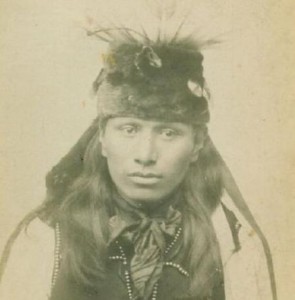
Black Elk Speaks: Visions Of The Other World
By Black Elk (1863 – 1950)
Excerpt:
 “As I danced, with Good Thunder and Kicking Bear holding my arms between them, I had the queer feeling that I knew and I seemed to be lifted clear off the ground. I did not have a vision all that first day. That night I thought about the other world and that the Wanekia himself was with my people there and maybe the holy tree of my vision was really blooming yonder right then, and that it was there my vision had already come true. From the center of the earth I had been shown all good and beautiful things in a great circle of peace, and maybe this land of my vision was where all my people were going, and there they would live and prosper where no Wasichus were or could ever be.
“As I danced, with Good Thunder and Kicking Bear holding my arms between them, I had the queer feeling that I knew and I seemed to be lifted clear off the ground. I did not have a vision all that first day. That night I thought about the other world and that the Wanekia himself was with my people there and maybe the holy tree of my vision was really blooming yonder right then, and that it was there my vision had already come true. From the center of the earth I had been shown all good and beautiful things in a great circle of peace, and maybe this land of my vision was where all my people were going, and there they would live and prosper where no Wasichus were or could ever be.
“Before we started dancing next day, Kicking Bear offered a prayer, saying: ‘Father, Great Spirit, behold these people! They shall go forth today to see their relatives, and yonder they shall be happy, day after day, and their happiness will not end.’
“Then we began dancing, and most of the people wailed and cried as they danced, holding hands in a circle; but some of them laughed with happiness. Now and then some one would fall down like dead, and others would go staggering around and panting before they would fall. While they were lying there like dead they were having visions, and we kept on dancing and singing, and many were crying for the old way of living and that the old religion might be with them again.
“After awhile I began to feel very queer. First, my legs seemed to be full of ants. I was dancing with my eyes closed, as the others did. Suddenly it seemed that I was swinging off the ground and not touching it any longer. The queer feeling came up from my legs and was in my heart now. It seemed I would glide forward like a swing, and then glide back again in longer and longer swoops. There was no fear with this, just a growing happiness.
“I must have fallen down, but I felt as though I had fallen off a swing when it was going forward, and I was floating head first through the air. My arms were stretched out, and all I saw at first was a single eagle feather right in front of me. Then the feather was a spotted eagle dancing on ahead of me with his wings fluttering, and he was making the shrill whistle that is his. My body did not move at all, but I looked ahead and floated fast toward where I looked.
“There was a ridge right in front of me, and I thought I was going to run into it, but I went right over it. On the other side of the ridge I could see a beautiful land where many, many people were camping in a great circle. I could see that they were happy and had plenty. Everywhere there were drying racks full of meat. The air was clear and beautiful with a living light that was everywhere. All around the circle, feeding on the green, green grass, were fat and happy horses; and animals of all kinds were scattered all over the green hills, and singing hunters were returning with their meat.
“I floated over the tepees and began to come down feet first at the center of the hoop where I could see a beautiful tree all green and full of flowers. When I touched the ground, two men were coming toward me, and they wore holy shirts made and painted in a certain way. They came to me and said: ‘It is not yet time to see your father, who is happy. You have work to do. We will give you something that you shall carry back to your people, and with it they shall come to see their loved ones.’
“I knew it was the way their holy shirts were made that they wanted me to take back. They told me to return at once, and then I was out in the air again, floating fast as before. When I came right over the dancing place, the people were still dancing, but it seemed they were not making any sound. I had hoped to see the withered tree in bloom, but it was dead.
“Then I fell back into my body, and as I did this I heard voices all around and above me, and I was sitting on the ground. Many were crowding around, asking me what vision I had seen. I told them just what I had seen, and what I brought back was the memory of the holy shirts the two men wore…”
• Native American Black Elk’s Near-Death Experience
• Black Elk Speaks: Visions of the Other World
• Wikipedia on Black Elk
…………………
Warrior Spirit Rising: A Native American Spiritual Journey
By Dianna Good Sky
Excerpt:
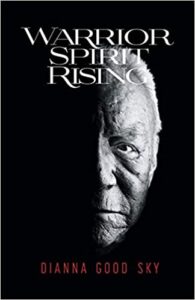 He was somehow floating upward. He was rising above his bed and, soon, he could see his sick, skinny, body lying curled up in the twin bed in his room at the Wrinkle Ranch. It looked pathetic. He suddenly felt so sorry for that sick person lying on that bed, looking so terrible.
He was somehow floating upward. He was rising above his bed and, soon, he could see his sick, skinny, body lying curled up in the twin bed in his room at the Wrinkle Ranch. It looked pathetic. He suddenly felt so sorry for that sick person lying on that bed, looking so terrible.
Just then, he felt someone else’s presence. A man, who felt familiar to him, but who Dad couldn’t recognize, stood right next to him. The man had no facial features, but he spoke to Dad in the Native language, in Ojibwe. He addressed Dad by name — Da Di Gay Guu Neb — and told him he would be his guide. He was there to help him through this. The man’s lips did not move, but Dad knew what the man was saying. He also knew, somehow, that everything was going to be alright.
They were joined by another faceless man and Dad knew that the second man was there to help him too, even though no words were spoken. He could still hear them, somehow.
The men stood, floated really, on either side of him. And then very quickly, all three of them flew through the roof of his room. He looked down and could see the whole building.
Dad knew they were going higher and higher in the air based on the size of what he saw down below. The houses, the cars, all the rest of the Tribal buildings, the lake and then Spirit Island…everything was getting smaller…
Dad was looking down on the people who had gathered there at the gravesite. There were so many people there, but he could see his kids, and even his ex-wife, crying over his grave. (Years later, while telling me this story again, he almost actually grinned as he said, “Even your mom was crying at my grave.”)…
His two guides were at his side again, and Dad knew it was time to leave. They turned toward the doorway they had pointed out before and the last thing he felt them say was to not look back. “Go now, and don’t look back, you’ll hear everyone crying and if you look back, you’ll get stuck.”
As soon as he opened the door, Dad suddenly felt even lighter than before. He felt like he was flying really fast, and he could see the bright white light that was at the other side of what seemed like a tunnel.
He kept his focus on that light.
His happiness became amplified. He felt so light! He felt so good! There was no pain, there was only peace. He was filled with an overwhelming sense of calm and gratitude. And love.
Not quite sure of how or what was happening, he was still very happy.
He began to see people as he passed by them. They had sticks in their mouths. They didn’t look very happy and he could feel a difference between how he felt and what they looked like. He was glad when he stopped seeing them, even though he wished he could help them. He instinctively knew that they had gotten stuck. They were lost.
Eventually he came to a bridge and crossed over. He saw many more people, all miserable, and he knew they were unhappy. As he continued on, he realized that these people were all him. Each individual represented him at various times of his life when he’d either had bad experiences or had done something bad to others.
He recognized himself in their faces and was saddened by what he saw. It was like he was given a view of himself that he couldn’t see before. He did not like what he saw. Their faces reflected anger. Sadness. Hopelessness. Regret. Shame. Fear. Grief. Despair. Jealousy. Just as he was beginning to comprehend the enormity of what he saw, they disappeared…
Dad went on, and eventually, he came to a huge wigwam, which was glowing with almost fluorescent light. There was a man in the middle of the wigwam. He had long white hair and his hair touched the floor. At first, Dad thought the man was dressed all in white. Then he realized that the man was glowing, he was the source of the luminescent light.
Dad knelt down in front of him with a sudden knowledge that this was the Creator. Dad was delighted to see him.
“Ni Gi iPii Dagoshin,” Dad said. “I have arrived.”
“Gaawiin Noozhis. Azhegiiwen.” The man replied. He, too, was faceless and glowing as bright as the wigwam around him. “No grandchild. You must return from where you came.”
Dad continued: “Nindibi iidog. Nigwiinawi-inendam.” He felt stunned. “I don’t know where I am! I don’t know what to think.”
This figure, whose white hair fell to the floor, said:
“Geyaabi. Gii Zhii Du Whin. Wii Doo Ko Daadiwin Gi JI Anishiinabeg.” “Go back, child, it’s not your time. You’re not finished yet. You have to help the people.”
Dad didn’t want to let go of this newfound peace that he was feeling, but he knew he had to listen to the man with the white hair…
…………………
Did Harriet Tubman Have A Near-Death Experience?
“As an adolescent, Tubman suffered a severe head injury when an overseer threw a two-pound metal weight at another slave who was attempting to flee. The weight struck Tubman instead, which she said ‘broke my skull.’ Bleeding and unconscious, she was returned to her owner’s house and laid on the seat of a loom, where she remained without medical care for two days. After this incident, Tubman frequently experienced extremely painful headaches. She also began having seizures and would seemingly fall unconscious, although she claimed to be aware of her surroundings while appearing to be asleep. This condition remained with her for the rest of her life; Larson suggests she may have suffered from temporal lobe epilepsy as a result of the injury.”
…
Harriet Tubman Quotes
“In my dreams and visions, I seemed to see a line, and on the other side of that line were green fields, and lovely flowers, and beautiful white ladies, who stretched out their arms to me over the line, but I couldn’t reach them no-how. I always fell before I got to the line.” — Source
“I looked at my hands to see if I was the same person. There was such a glory over everything. The sun came up like gold through the trees, and I felt like I was in heaven.” — Source
…
Harriet Tubman’s Visions From God Play A Major Role In The New Biopic
By Lia Beck
The Harriet Tubman biopic Harriet follows the iconic abolitionist’s life from the time right before she runs away to freedom up to the Civil War. And while audiences should be familiar with at least parts of her story that go beyond the content of their history textbooks, the film focuses on a particular element of Tubman’s life that may surprise some viewers. It’s been documented that Harriet Tubman had visions that she believed were god’s way of telling her about events before they happened.
In the film, Harriet (Cynthia Erivo) explains that the visions began after she got a head injury while trying to protect another slave from their owner. This is accurate. According to History, at age 12, Tubman saw an overseer about to throw a heavy weight at a fugitive slave and stepped in front of them, so that the weight hit her. After that, she began to go into sleep-like states during the day, and during these episodes and in her dreams at night, she felt god came to her to give her warnings, including ones about her family members being sold to other slave owners.
“[The visions are] very much a part of Harriet Tubman. She talked about it a lot,” Harriet director and co-writer Kasi Lemmons tells Bustle at the New York press junket for the film. Lemmons researched the visions in depth for her film and found numerous instances in which Tubman said she knew about things before they occurred. “She’d say, for instance, I saw a dark cloud hanging over my brothers and knew that they were about to be sold,” the filmmaker explains.
Lemmons notes two other instances of premonition that Tubman felt certain about. “She was friends with John Brown, and he really was desperate for her to join him at Harpers Ferry, and she had a vision that he was going to be cut down and she didn’t go,” the filmmaker says. After Brown led a violent anti-slavery 1859 raid on Harpers Ferry, he was hanged for treason.
Similarly, Tubman said she had a vision about the end of slavery in the U.S. a couple of years before the Emancipation Proclamation. “She woke up from the vision and said to her abolitionist friend, ‘My people are free!'” Lemmons explains. “And her friend said, ‘My dear, not in our lifetime.’ And Harriet said, ‘No, god just showed me. My people are free.’ To the point where, when the Emancipation Proclamation happened and people were celebrating, her friend said to her, ‘Why aren’t you celebrating?’ [Tubman] said, ‘I celebrated two years ago.'”
The same story is recounted in Harriet: The Moses of Her People, an 1886 biography by Sarah H. Bradford that features interviews with Tubman. According to the account in the book, Tubman said, “I had my jubilee three years ago. I rejoiced all I could den; I can’t rejoice no more.”
In her research, Lemmons says she found that there were other friends and acquaintances in Tubman’s life who doubted her ability to see the future. “‘Well, I don’t know if I believe everything, but I know she believes it,'” is how the filmmaker sums up the position of most people who knew Tubman. Lemmons also notes that Tubman supposedly knew other people who received visions, “who were like kindred spirits in that way.”
The visions weren’t the only powerful spiritual connection that Tubman believed she had with her god. As Lemmons notes, Tubman’s owner, Edward Brodess died a week after she “cursed him.” Another of Bradford’s biographies, Scenes From the Life of Harriet Tubman, explains that Tubman prayed that Brodess would change his mind about selling her away from the rest of her family, and eventually, she prayed that if his mind couldn’t be changed that he should die. This also plays out in the film.
So much is known about Tubman and about her visions thanks to writers and fellow abolitionists, who kept track of her history, but also thanks to Tubman herself. Lemmons explains that Tubman would hold events where she would tell her story to raise money for the cause. Thanks to these accounts, the filmmaker was able to refer to Tubman’s own words to cinematically represent the visions that assisted Tubman in freeing herself and so many others.
To learn more about Harriet Tubman, go here.
…………….
DEFENDING THE FAITH: ‘THEY WERE DEAD – BUT … THEY WERE ALL SO HAPPY!’
By Daniel Peterson
The Deseret News
October 9, 2014
Many years ago, in the village of Kona on the big island of Hawaii, a woman named Kalima grew ill and died, leaving behind a bereaved family, including a husband and young children. Having prepared her grave and readied her body for burial, kinfolk and friends gathered about her corpse for their last farewell.
Suddenly, though, she moved, took a long breath, and looked around.
“I have something strange to tell you,” she announced. And, several days later, she finally felt strong enough to share her story.
As they knew, she said, she had died. But, even while dead, she was still alive. She found herself standing beside her body, looking down on it, in a different body that nonetheless resembled it in appearance. After a few minutes, though, she left.
She walked through nearby villages. But these villages were different — much larger than she had known them to be, with far more people. “Some of them I knew,” she said, “and they spoke to me — although this seemed strange, for I knew they were dead — but nearly all were strangers. They were all so happy! They seemed not to have a care; nothing to trouble them. Joy was in every face, and happy laughter and bright, loving words were on every tongue.”
“I felt so full of joy, too,” she recalled, “that my heart sang within me, and I was glad to be dead.”
But then, when she reached South Point — the sacred promontory where Polynesians first arrived in the Hawaiian Islands — the people there told her, “You must go back to your body. You are not to die yet.”
However, she didn’t want to go back, and she begged them to let her stay. But they refused, declaring that if she didn’t return willingly, they would force her. Which, as it happened, is precisely what they did.
Finally, she recounted, “I reached my home and stood by my body again. I looked at it and hated it. Was that my body? What a horrid, loathsome thing it was to me now, since I had seen so many beautiful, happy creatures! Must I go and live in that thing again? No, I would not go into it; I rebelled and cried for mercy.”
“You must go into it,” insisted those around her. “We will make you.” And, thereupon, they pushed her, head first, through her feet into her lifeless body. Her continued fighting and struggling was of no avail. So, eventually, she resigned herself to the process.
“Then,” Kalima said, “my body came to life again, and I opened my eyes. But I wish I could have stayed with those happy people. It was cruel to make me come back. My other body was so beautiful, and I was so happy, so happy!”
This story is probably impossible to verify. What you’ve just read is my shortened retelling of a retelling by one “Mrs. E.N. Haley,” which was published in 1907 in a book edited by the pioneer Honolulu publisher and antiquarian Thomas Thrum (1842-1932) under the title of “Hawaiian Folk Tales.” No details are provided from which to identify Kalima, nor are any hints given as to when her purported experience occurred or how Mrs. Haley learned of it.
Nonetheless, whatever its precise provenance, the story seems both remarkable and significant. Although it was published nearly seven decades before Raymond Moody’s famous 1975 best-seller “Life After Life” launched the modern fascination with near-death experiences, or NDEs, Kalima’s account matches standard models of the NDE in many specific ways.
Her out-of-body experience, seeing her dead physical body (and viewing it with distaste), a spiritual body (similar in appearance to her earthly one), meetings with very happy people known to be dead, an apparent boundary beyond which she may not pass, the idea that it wasn’t “her time,” her being ordered to return to her body and her reluctance to do so — all of these are abundantly paralleled in literally hundreds of such accounts that I’ve read, and probably in thousands more that I haven’t.
Yet, obviously, neither Kalima nor Mrs. Haley could possibly have been influenced by the reports that have been published in scores of books and hundreds of articles since 1975. In other words, it’s difficult, if not impossible, to dismiss this story as mere fantasy.
A complete copy of the book is located here and here.
…………………
Near-Death Experiencer Arthur E. Yensen: “I Saw Heaven And It Changed My Life”
Arthur Yensen’s 1932 Near-Death Experience
In August of 1932, Arthur Yensen, a university graduate, geologist, and staunch -materialist -turned -syndicated -cartoonist, decided to take some time off to research his weekly cartoon strip, “Adventurous Willie Wispo.” Since his main character was a hobo, Yensen became a hobo for a time, blending in with the over sixteen million unemployed at that time in our nation’s Great Depression. He bummed rides from Chicago through Minnesota, until a young man in a convertible coupe picked him up on the way to Winnipeg. Going too fast for the road conditions, the car hit a three-foot-high ridge of oiled gravel and flipped into a series of violent somersaults. Both men were catapulted through the cloth top before the car smashed into a ditch. The driver escaped unharmed, but Yensen was injured, losing consciousness just as two female spectators rushed to his aid. After seeing the afterlife during this near-death experience, he later learned that telling others about his NDE often brought criticism, especially from the church. But there were those who would listen and as time wore on, more and more people would ask him about it. Finally in 1955, Arthur Yensen published a report of his near-death experience after much public interest. His booklet entitled “I Saw Heaven” (now out-of-print, but a photocopy of the booklet is available for $5 from Eric Yensen, 1415 E. Oak St., Caldwell, Idaho 83605 or email yensen@micron.net) describes his NDE and gives answers to questions he was always asked.
For more information about Yensen and his near-death experience, go here.
……………….
Evidence of the Afterlife
By Dr. Jeffrey Long
Published in 2010, this study examines 1,300 NDEs from around the world
Excerpts:
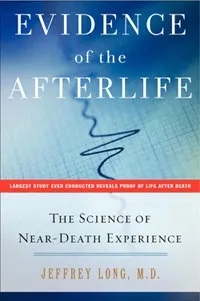 “The core NDE experience is the same all over the world. Whether it’s a near-death experience of a Hindu in India, a Muslim in Egypt, or a Christian in the United States, the same core elements are present in all, including out-of-body experience, tunnel experience, feelings of peace, beings of light, a life review, reluctance to return, and transformation after the NDE. In short, the experience of dying appears similar among all humans, no matter where they live.”
“The core NDE experience is the same all over the world. Whether it’s a near-death experience of a Hindu in India, a Muslim in Egypt, or a Christian in the United States, the same core elements are present in all, including out-of-body experience, tunnel experience, feelings of peace, beings of light, a life review, reluctance to return, and transformation after the NDE. In short, the experience of dying appears similar among all humans, no matter where they live.”
“The results of the Near-Death Experience Research Foundation (NDERF) study… finds that what people discovered during their near-death experience about God, love, afterlife, reason for our earthly existence, earthly hardships, forgiveness, and many other concepts is strikingly consistent across cultures, races, and creeds. Also, these discoveries are generally not what would have been expected from preexisting societal beliefs, religious teachings, or any other source of earthly knowledge.”
To download a three-page summary of the most important findings of Dr. Long’s research, click here (pdf).
Dr. Long’s organization, the Near-Death Experience Research Foundation, continues to collect NDEs from around the world. It currently includes over 4,000 near-death experience accounts in over 23 languages.
………………….
God and the Afterlife: The Groundbreaking New Evidence for God and Near-Death Experience
By Jeffrey Long, Paul Perry
Published in 2016, this book examines 3,000 NDEs from around the world
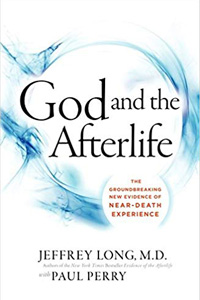 Based on the largest near-death experience study in history, involving 3,000 people from diverse backgrounds and religious traditions, including nonbelievers, God and the Afterlife presents startling evidence that a Supreme Being exists — and there is amazing consistency about what he is like.
Based on the largest near-death experience study in history, involving 3,000 people from diverse backgrounds and religious traditions, including nonbelievers, God and the Afterlife presents startling evidence that a Supreme Being exists — and there is amazing consistency about what he is like.
In his bestselling book Evidence of the Afterlife, Dr. Jefferey Long showed us that there is a strong scientific case for life after death. Now, he goes further, revealing evidence that God is real. At the Near Death Experience Research Foundation, Dr. Long studied the stories of thousands of people who have journeyed to the afterlife. Though there are a wide variety of differences in how people experience NDEs — some see a bright light, others go through a tunnel, still others experience a review of their life — he discovered that many of the accounts shared a remarkably similar description of God; a Supreme Being who radiated love and grace.
Expanding on his analysis begun in Evidence of the Afterlife, God and the Afterlife is the first intensive exploration of the people who have reported going to the frontier of heaven, met God, and have returned to share their journey. Groundbreaking and profound, it provides new insight into the human experience and expands our notions of mortality, offering possibility, hope, and comfort.
Click here to read excerpts from this important book.
………………….
Elisabeth Kubler-Ross On Near-Death Experiences
 Elisabeth Kubler-Ross began an in-depth study of experiences reported by patients who had been resuscitated after having been declared dead. Together with hospital co-worker Reverend Gaines, she collected accounts of near-death experiences from around the world. To be certain the results contained no religious or cultural bias, they collected data from a variety of cultures including Eskimos, Hawaiians and Australian Aboriginals, and from people with various belief systems such as Hindus, Buddhists, Protestants, Catholics, Jews, agnostics and atheists. Both Ross and Gaines were astounded by the results. The similarities to those they had heard from their own patients could not be ignored. In a 1977 lecture, she shared the results of her world-wide study:
Elisabeth Kubler-Ross began an in-depth study of experiences reported by patients who had been resuscitated after having been declared dead. Together with hospital co-worker Reverend Gaines, she collected accounts of near-death experiences from around the world. To be certain the results contained no religious or cultural bias, they collected data from a variety of cultures including Eskimos, Hawaiians and Australian Aboriginals, and from people with various belief systems such as Hindus, Buddhists, Protestants, Catholics, Jews, agnostics and atheists. Both Ross and Gaines were astounded by the results. The similarities to those they had heard from their own patients could not be ignored. In a 1977 lecture, she shared the results of her world-wide study:
“They are all fully aware of shedding their physical body, and death, as we understand it in scientific language, does not really exist.”
“There is no time or distance. If we are separated from a loved one [as we are dying] we have only to think of them and we will be wherever they are in an instant.”
“We may try to communicate with those we leave behind, but soon realize they can neither see nor hear us.”
“We become aware that departed loved ones are awaiting us on the other side.”
“We may travel through a tunnel, pass through a gate, cross a bridge, or travel through something else familiar to us.”
“At the end of this journey, we will be embraced by an indescribably loving light.”
“If we are meant to return, we are permitted to see this light only briefly. If this is the end of our earthly journey, however, we will experience understanding without judgement as we stand in the light, and will come to understand that life on earth was nothing more than a school.”
“We will be shown our life from the first to last day and will re-experience every thought we had, every deed we did, and every word we spoke. In the light of unconditional love and non-judgement, we will come to understand the consequences resulting from those thoughts, words and deeds, and recognize how many opportunities we missed to grow.”
“…many of our patients …are not always grateful when their butterfly is squashed back into the cocoon.”
“Not one of the patients who has had an out-of-body experience was ever again afraid to die.”
…………………
Jewish Near-Death Experiences
…………………
Alon Anava, A Jewish Man, Shares His Near-Death Experience
…………………
Hila Baruch Shares Her Near-Death Experience
…………………
Buddhist Near-Death Experiences
…………………
Buddhist Woman Dies, Has Life Review, Encounters Spiritual Being, Experiences Miraculous Healing
…………………
…………………
…………………
…………………
Hindu Near-Death Experiences
…………………
…………………
…………………
…………………
Muslim Near-Death Experiences
…………………
…………………
…………………
David Sunfellow asks:
“I’m wondering if you have come across any NDEs that feature Muhammad as a central figure greeting NDErs? I had a reader recently ask me this question, and I could only think of one NDE where Muhammad showed up. And he didn’t show up as a greeting presence like Jesus often does, but, instead, was in the background hanging out with Jesus, Buddha, Krishna, Noah, Moses, and Mother Mary.
“Also, what about Buddha? And Krishna? And other major religious figures? Do you have any statistics for often these folks show up in NDEs?”
NDE Research Dr. Jeffrey Long answers:
“I cannot recall any NDEs with Muhammad as a central figure. I recently published a paper on over 20 Muslim NDEs from Iran [in Journal of Near-Death Studies 33, Fall 2014]. We found the content of these NDEs to be strikingly similar to typical Western NDEs. In dialoguing with the Iranian co-author I asked about Muhammad in Muslim NDEs. He said that Muslims have a cultural taboo against sharing encounters with Muhammad, and thus even if they encountered Muhammad in their NDEs, they would likely be very reluctant to share that. Buddha and Krishna are rarely reported in NDEs. You can go to the Search box at the top right of the nderf.org website, enter these religious figures, and see this.”
Jesus, according to Dr. Long, appears in 6.5 percent of the near-death experiences reported around the world.
Related Links:
• Search the NDERF website for references to Muhammad
• Subscribe to the of Journal of Near-Death Studies
• Encounters with Jesus Website
• Jesus, Near-Death Experiences, and Religion
• Jesus NDE Encounters (Near-Death.com)
• Jesus NDE Encounters (NDERF)
…………………
A Comparative Analysis of Japanese and Western NDEs
By Masayuki Ohkado, Ph.D., Chubu University and Bruce Greyson, M.D., University of Virginia
Published in 2014, based on reports from 22 Japanese near-death experiencers
Conclusion:
Pointing out that some of the prominent features in Western NDEs, such as the life review, have so far been absent in non-Western NDEs, Kellehear (2009, p. 135) emphasized the importance of exploring cultural factors more thoroughly before turning to biological factors. In this article we focused on Japanese NDEs, which were not included in Kellehear’s (2009) cross-cultural studies, and we compared them to generalizations based on observations of Western NDEs. The main differences were the interpretation of the light and the concomitant lack of interaction with it, the image of heaven, and the lack of the life review. We suggest that these characteristics may be accounted for in terms of cultural backgrounds.
Download Report (pdf)
…………………
RELATED LINKS:
• Near-Death Experiences From Around The World – Video, Audio, Text
• Religious Evidence of the Afterlife
• NDEs Have Been Reported Since Ancient Times
• Conceptions of the Afterlife in Early Civilizations: Universalism, Constructivism and Near-Death Experience by Gregory Shushan
• Census of Non-Western NDEs to 2005: Overview of the Current Data by Allan Kellehear, Ph.D.
• NDEs throughout History and across Cultures by Allan Kellehear, PhD
• IANDS: Key Facts About Near-Death Experiences – History and Prevalence
• Wikipedia on the History of Near-Death Experiences
• Culture, Seeing Religious Figures And A Reason For Returning To Life
• Plato’s Republic: The Myth of Er
• Wikipedia on “The Myth of Er”
• All About Emanuel Swedenborg
• Emanuel Swedenborg’s Near-Death Experiences
• Julian of Norwich: An NDE from 1373 AD
• Julian of Norwich: Revelations of Divine Love (Kindle & Paperback Versions)
• Julian of Norwich: Revelations of Divine Love (Free Online Copies)
• Wikipedia on Julian of Norwich
• Native American Black Elk’s Near-Death Experience
• Black Elk Speaks: Visions of the Other World
• Wikipedia on Black Elk
• Albert Heim: “Notes on Deaths from Falls”
• Near-Death Experiences in China – A Study of Survivors of the Tangshan Earthquake
• Channeled Material Describes Life Review Process Years, Possibly Decades, Before Moody
• Walter Russell, The Man Who Tapped The Secrets Of The Universe
• Carl Jung’s Near-Death Experience
• NDE Videos (Includes Buddhist, Muslim, Hindu, and Jewish NDEs)
• German Near-Death Experience Accounts
• German Accounts Dubbed In English
• German Accounts Dubbed In French
• Portuguese Near-Death Experiences (with English subtitles)
• Near-Death Experiences of Christians
• Near-Death Experiences of Jewish People
• The NDE of Alon Anava (A Jewish NDE)
• Near-Death Experiences of Muslims
• Near-Death Experiences of Buddhists
• The Tibetan Book of the Dead – Link One – Link Two – Link Three
• 10 Surprising Near-Death Experiences That May Change Your Beliefs (Includes an NDE account with Muhammad)
• Eleven Thai Near-Death Experiences
• Near-Death Experiences of Hindus
• Non-Western NDEs
…………..
